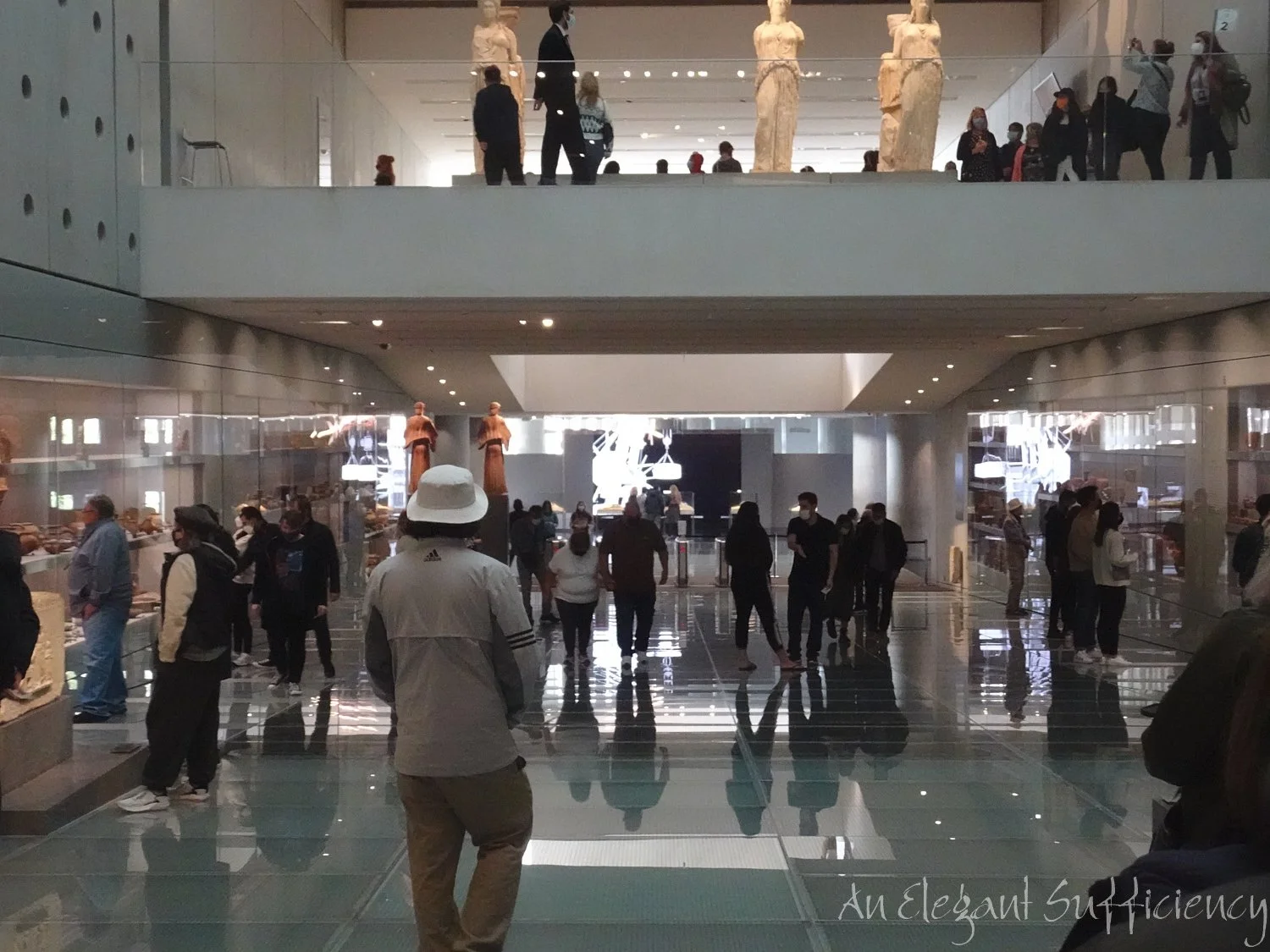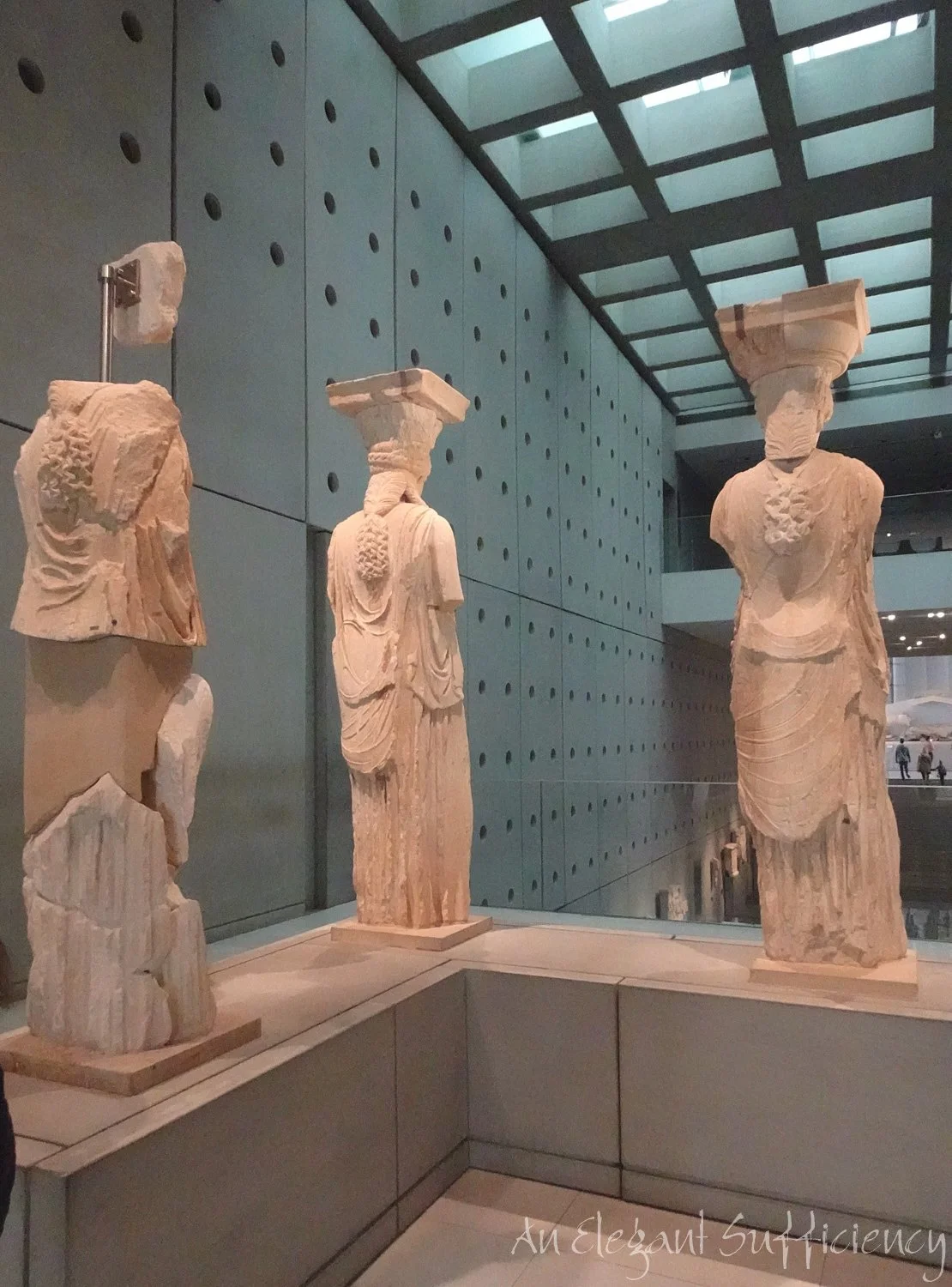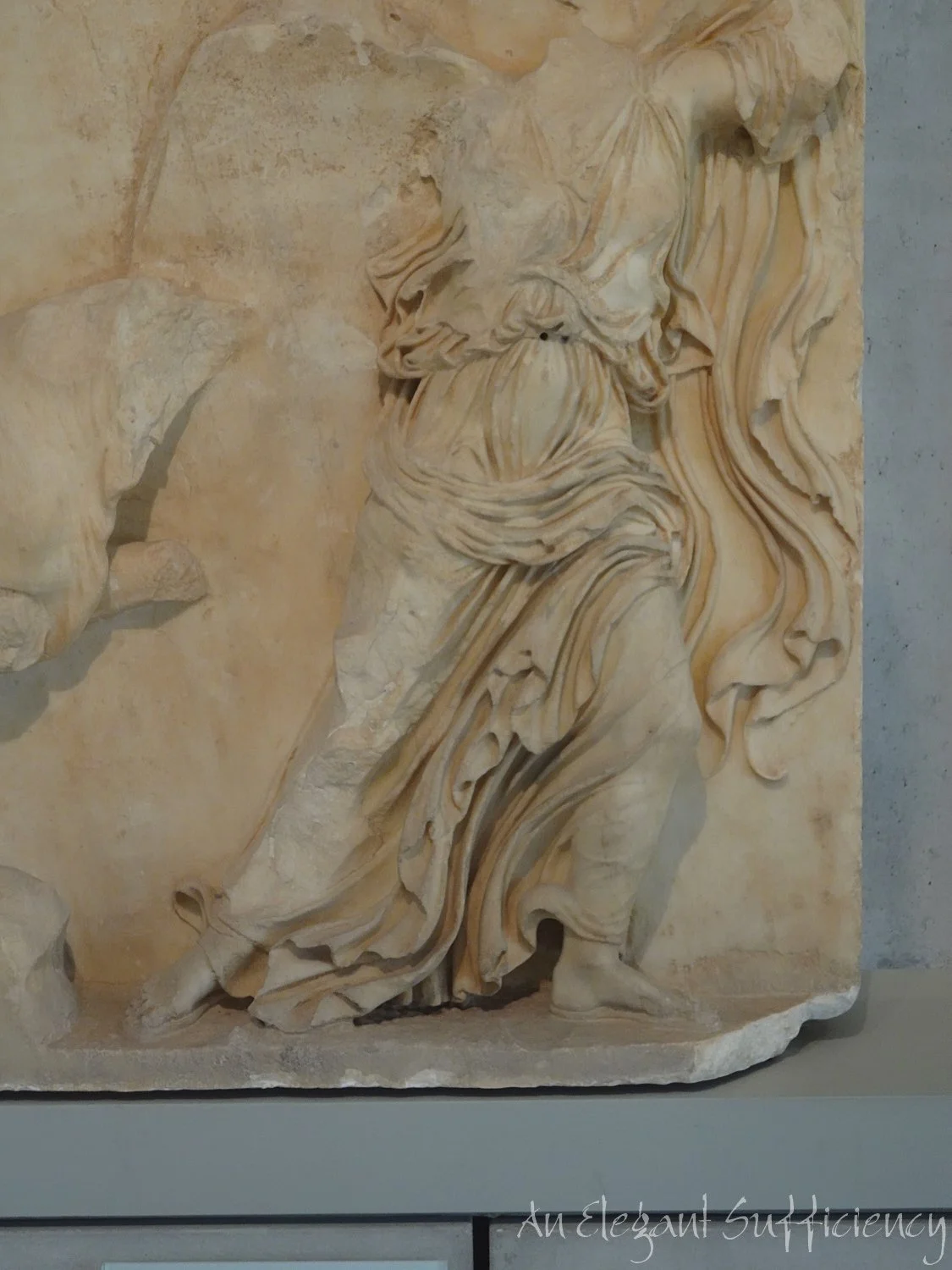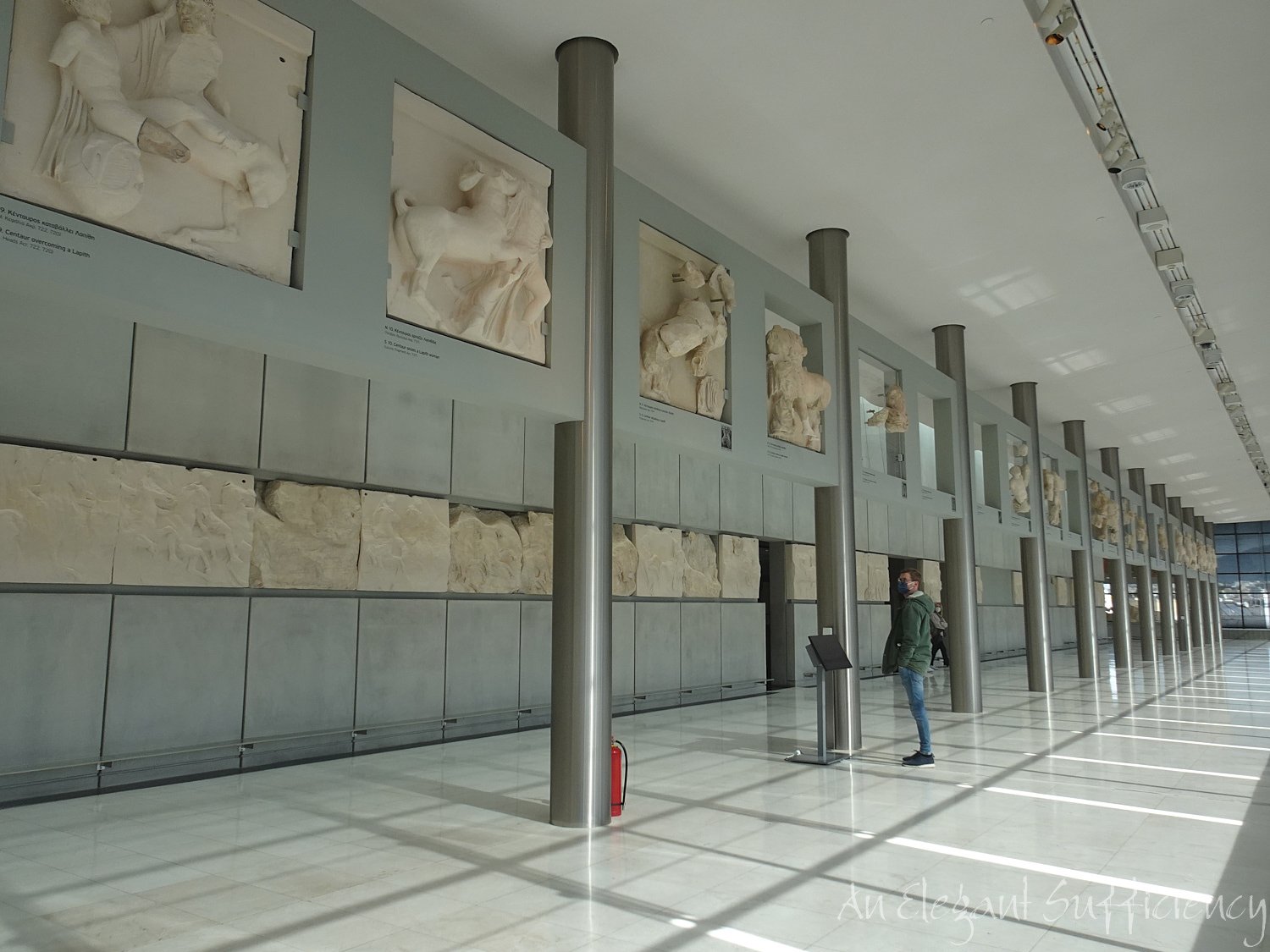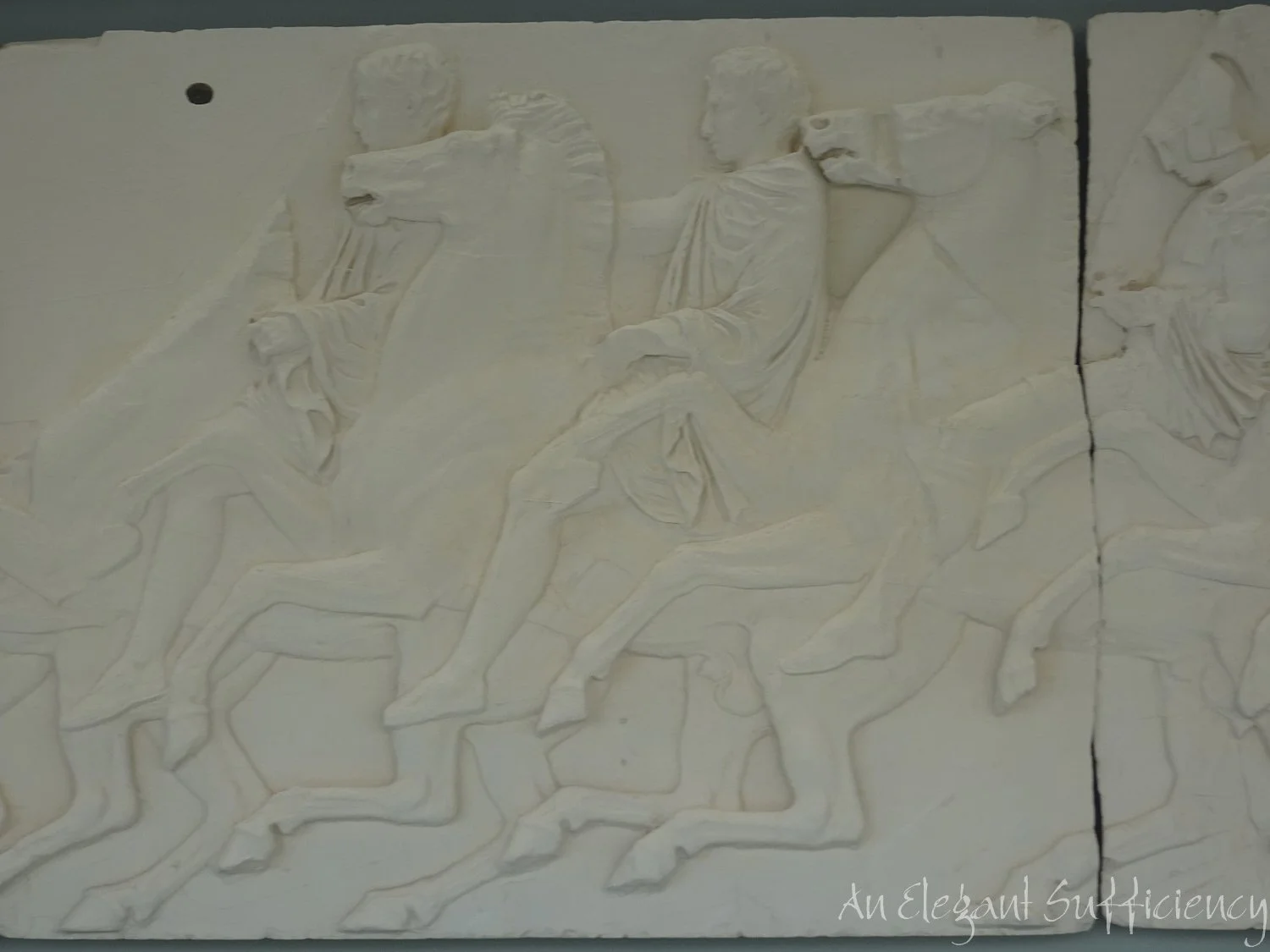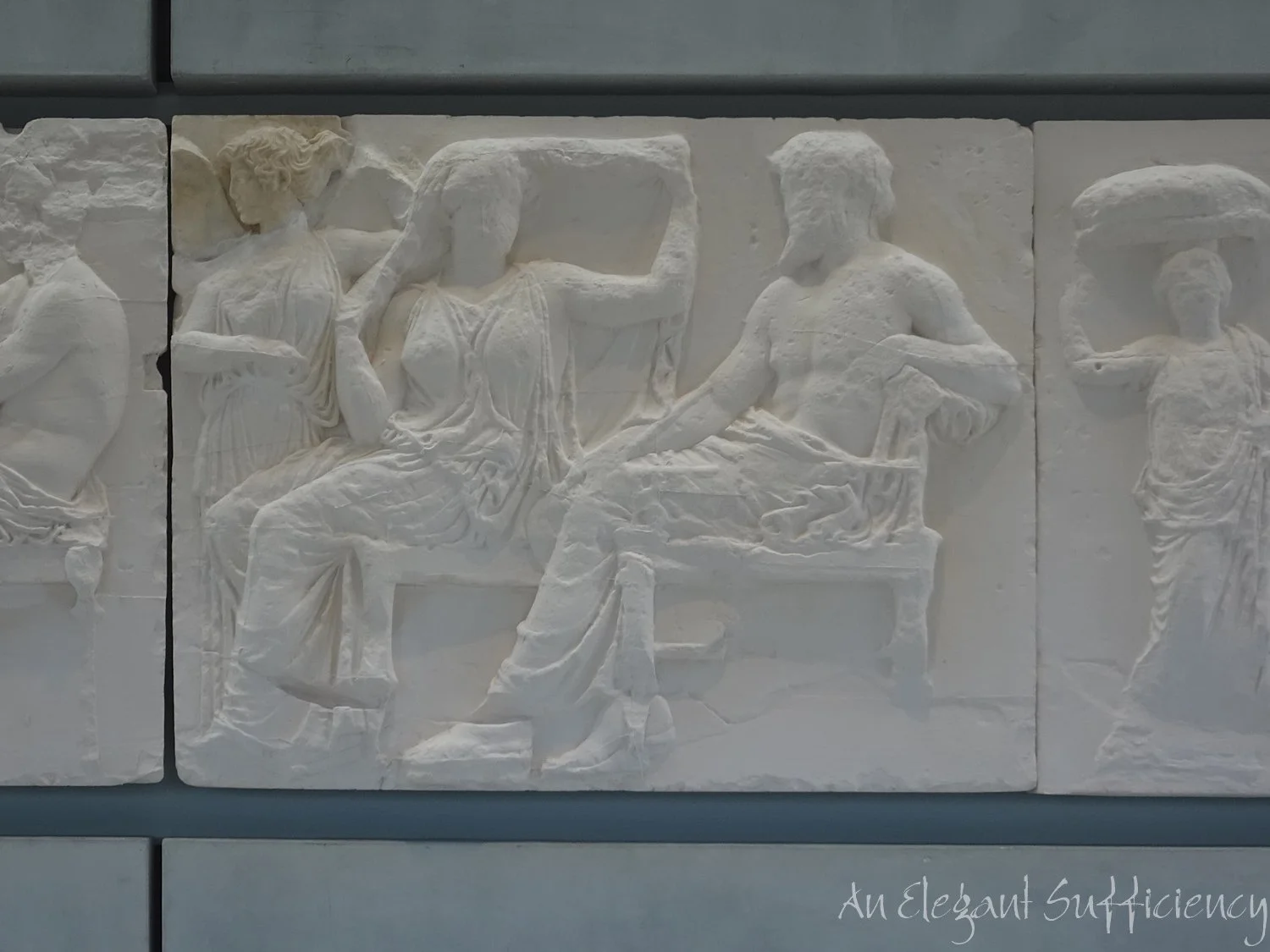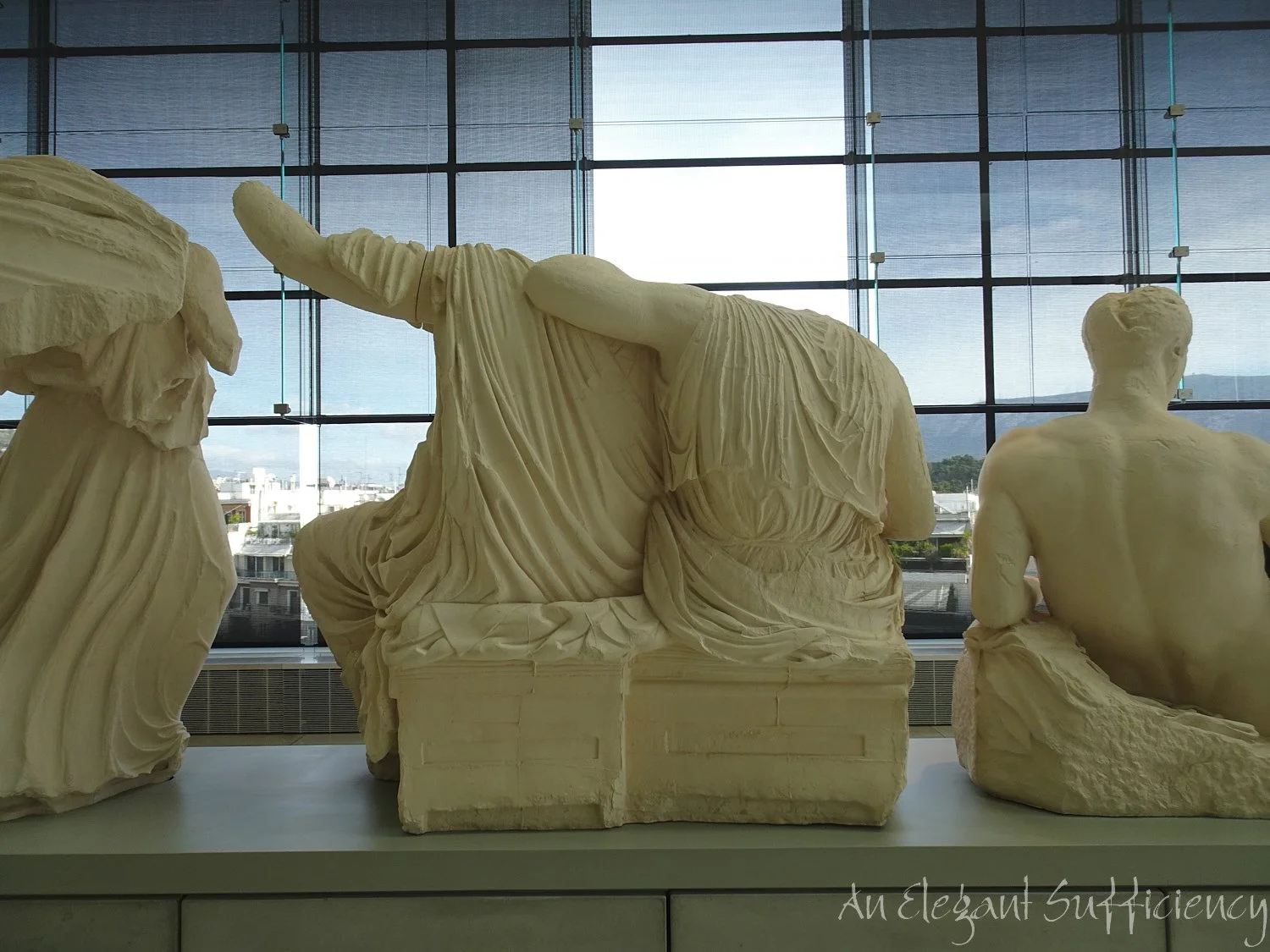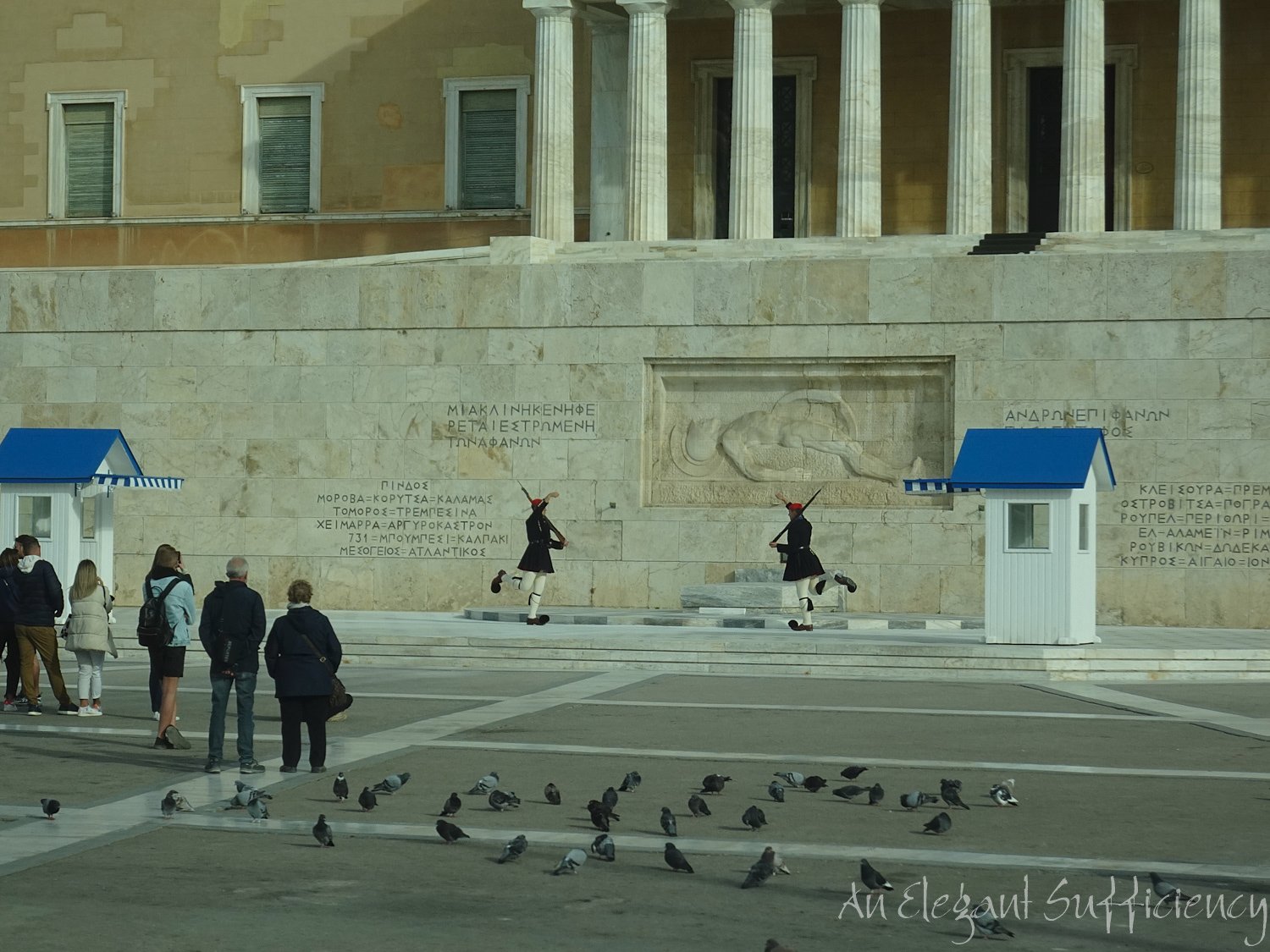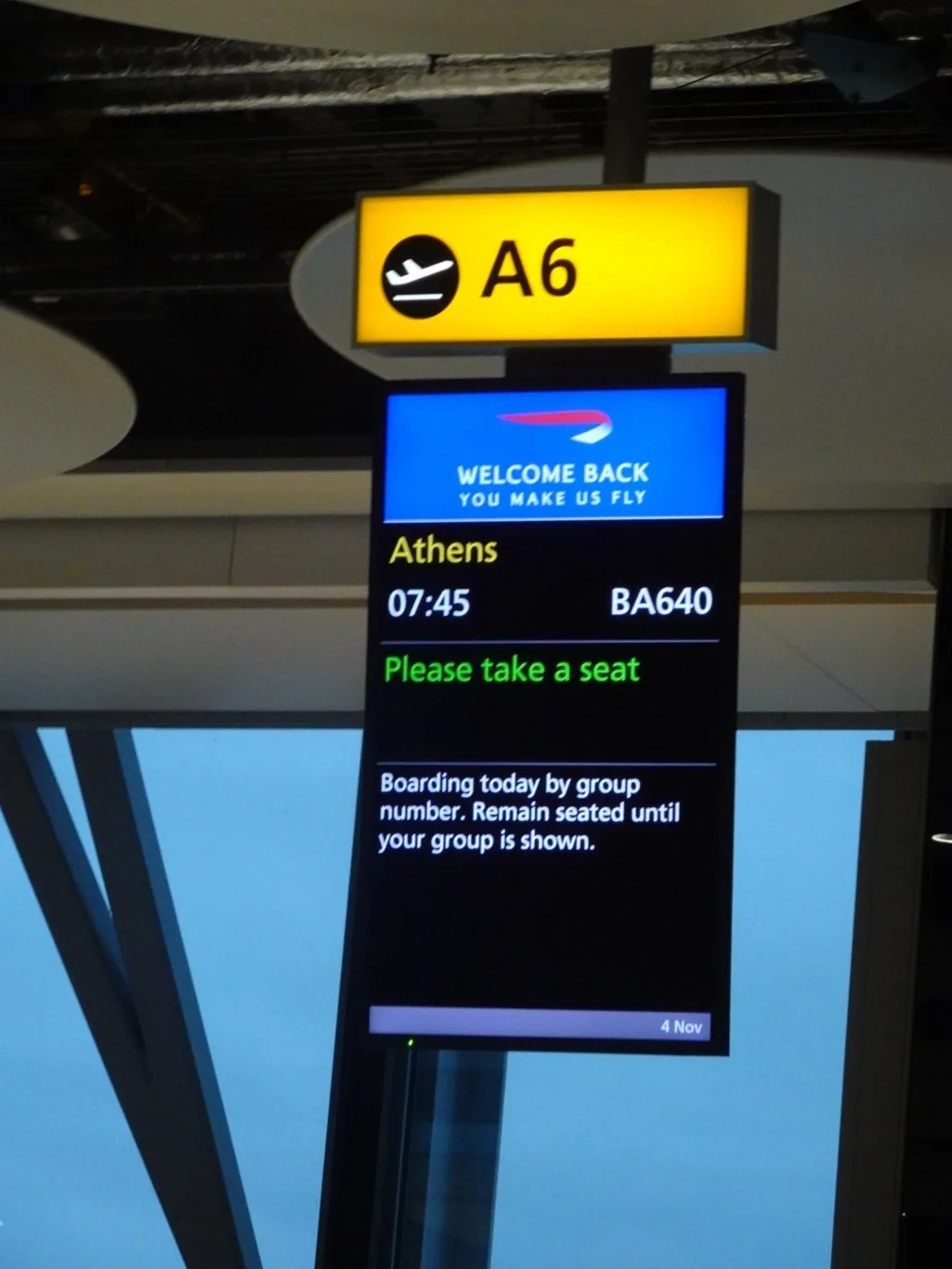Into the New Museum
We had caught a glimpse of the New Museum from up there by the real thing and though we started out knowing nothing about it, Gabrielle’s references had whetted our appetites. We were in for a treat!
But first there was a small challenge. When we’d left the ship this morning, we were advised to take with us our vaccination certificate and our cruise card - the usual identification evidence and our only means of getting back on board later. However, no sooner had we arrived than Gabrielle advised that we’d also need some form of photo id - a driving licence or a passport. Hmmm. We don’t carry passports around with us and not everyone - me included - has a photo id driving licence. It seems as though here in Athens, it’s all too easy to forge or borrow a vaccination certificate and since such things are needed to access almost anywhere, including cafes and bars, it’s now commonplace to request photo id to validate the certificate.
A phone call to the ship somehow enabled the necessary id evidence to be sent to the museum and we were soon admitted inside. Phew!
It was quite a busy place too. But open and airy and everyone was wearing a mask and keeping their distance. No worries here.
My first sight was something beneath my feet. The glass floor was mostly opaque but in some areas was left clear to reveal findings when the excavations were made.
Some people found it unnerving to stand on the open space, but it felt very secure and there was no movement whatsoever.
Of course, there on the upper floors there was an interesting view of the soles of visitors’ shoes and well…thankfully everyone was wearing trousers as far as I could see.
There were collections of vessels and of stone carvings, all found during the excavation. I made sure to take a photograph of Athene, or Minerva as she’s known in Rome, fondly regarded in this family as Edward’s muse (it’s a long story…)
The layout and architecture of the museum made for interesting viewing too and drew us in. We wanted to go up there and see more!
And of course, we did. But not before a really excellent guided tour of the vast collection of Kore from Gabrielle, who explained how they developed from a somewhat stiff, artificial appearance to that of a realistic young woman, with a semblance of movement even. Sadly, these treasures were the only collection in the museum where photography was prohibited, but the website has some better photos than I could ever have taken.
Around the corner were the Caryatids - well, four of them, with a conspicuous space where the one in the British Museum should be.
These were used as more decorative replacements for pillars. Bearing a huge weight, the neck would normally be the weak spot, but seeing the figures from all sides, we were able to see for ourselves how that challenge was resolved - the neck of each figure was strengthened by means of elaborate hair!
A little further one, we returned to the Temple of Nike again, to see for ourselves a piece of the balustrade Gabrielle had mentioned earlier. The beautiful flowing fabric was highlighted, where considerable skill had been used to create a feeling of movement.
Up to the top floor then, into the glass area which we’d seen earlier, set at an angle. The whole floor was a replica of the Parthenon itself, with the columns supporting the carved stone panels. Some of these were original, others gypsum replicas.
Just in case we wanted to refer to the original, there is was framed in the window.
Gabrielle gave many details of the panels, marvelling at how many hands had managed to create such a uniform finish and style to the design. In particular, she pointed out these horses. The background to the design of the panels is unknown, but it has been noted that here, in this scene, 192 horses are sculpted. She referenced the Battle of Marathon where 192 men and horses were killed. We can draw our own conclusion.
In particular, we appreciated the casual poses of many of the figures - here interpreted as Gods due to the symbolism surrounding them. The only man sitting on a chair - not a stool - is thought to be Zeus and the Goddess alongside him, adjusting her shawl is thought to be Hera.
For me, walking along the back of the stone figures from the pediment, it was these two friends sitting together who caught my eye. How human they are, how relaxed and how real! Of course, had they been way up there high above my head, I’d never have noticed, would I?
Having seen the best of the museum, it was about lunchtime and our next stop was in a smallish restaurant in the Plaka, where we enjoyed a typical Greek lunch of salad, spanakopita and stifado with potatoes. Once finished, we were free to wander the streets having agreed a meeting time “by Melina Mercouri”
Actually, our meeting place was equally by Hadrian’s Arch, but I guess Melina Mercouri was easier to remember!
Our drive back included a quick look at the Panathenaic Stadium
and past the Parliament, where the beautifully uniformed Evzone guardsmen were doing their peculiar walk. In my efforts to find out about this, I came across some interesting information. Who knew?!
Back along the avenue with the museum, the library and the university and towards Piraeus.
There was that dull business of packing to be done, sadly.
I’ll post a few photographs of the interior of this beautiful ship in my next post.














